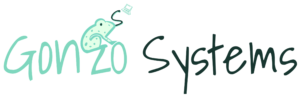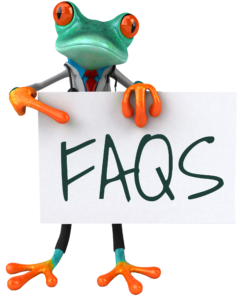
Menu
FAQs
We're here to help
The Basics
So, I want to establish a strong presence on the web.
But where do I start?
But where do I start?
The four easy steps we provide below will guide you in the direction of a professionally designed, developed, and marketed website.
Step One: Domain Name (URL) Registration - This is the address people will use to access your website (www.yourcompany.com) Once you have determined that the URL you wish to use is available, the cost to register a name is anywhere from $8.00 to $35.00 per year. A domain name needs to be renewed every year.
Step Two: Design of the Website - This is where the look, feel, and content of the website are determined and created.
Step Three: Hosting Your Website on a Web Server - This is basically where you rent space on a computer that is always connected to the Internet. Price will vary, depending on the amount of disc space you will have and the connection to the Internet.
Step Four: Marketing your Website - You should be thinking about the marketing of your website as it is being designed. The content of the site needs to reflect the search terms if you want your site to appear on search engines.
Step One: Domain Name (URL) Registration - This is the address people will use to access your website (www.yourcompany.com) Once you have determined that the URL you wish to use is available, the cost to register a name is anywhere from $8.00 to $35.00 per year. A domain name needs to be renewed every year.
Step Two: Design of the Website - This is where the look, feel, and content of the website are determined and created.
Step Three: Hosting Your Website on a Web Server - This is basically where you rent space on a computer that is always connected to the Internet. Price will vary, depending on the amount of disc space you will have and the connection to the Internet.
Step Four: Marketing your Website - You should be thinking about the marketing of your website as it is being designed. The content of the site needs to reflect the search terms if you want your site to appear on search engines.
What is a URL?
It stands for "universal resource locator." This is the address typed in to view your web page on the Internet. For example, you would type in http://www.gonzosystems.net to access our home page.
What domain name should I choose?
This depends on how you are going to use it. If you are going to be telling people over the phone, choose one that is easy to say and spell out loud. Above all, I would choose one that is memorable and not confusing.
What is the difference between a "static" and a "dynamic" site?
Each page is a separate document and there is no database that it draws on. What this means functionally is that the only way to edit the site is to go into each page and edit the code - through our Evoq's™ CMS (Content Management System).
A dynamic site is written using more complex code and can do a lot more. For instance, we can make an area where you can log in and change various parts of the site, such as adding information or products. This is because each page is constructed based on the information in a database, and the information in that database can be changed via another interface. Dynamic sites usually cost more to develop, as they require more complex coding and a content management utility needs to be developed to help you manage your website information.
Another benefit of dynamic sites is that they allow you to change only the content of the site and not the design, so you will not be able to accidentally break the visual style of the site. They have other benefits when sites start to get very large, as they make data management much more efficient and your site more expandable.
Many clients do a combination, having some dynamic areas such as a product catalog where they have to change information or pictures regularly and leave other pages such as contact information as static pages.
A dynamic site is written using more complex code and can do a lot more. For instance, we can make an area where you can log in and change various parts of the site, such as adding information or products. This is because each page is constructed based on the information in a database, and the information in that database can be changed via another interface. Dynamic sites usually cost more to develop, as they require more complex coding and a content management utility needs to be developed to help you manage your website information.
Another benefit of dynamic sites is that they allow you to change only the content of the site and not the design, so you will not be able to accidentally break the visual style of the site. They have other benefits when sites start to get very large, as they make data management much more efficient and your site more expandable.
Many clients do a combination, having some dynamic areas such as a product catalog where they have to change information or pictures regularly and leave other pages such as contact information as static pages.
Recent News
Quick Links
Social Media
